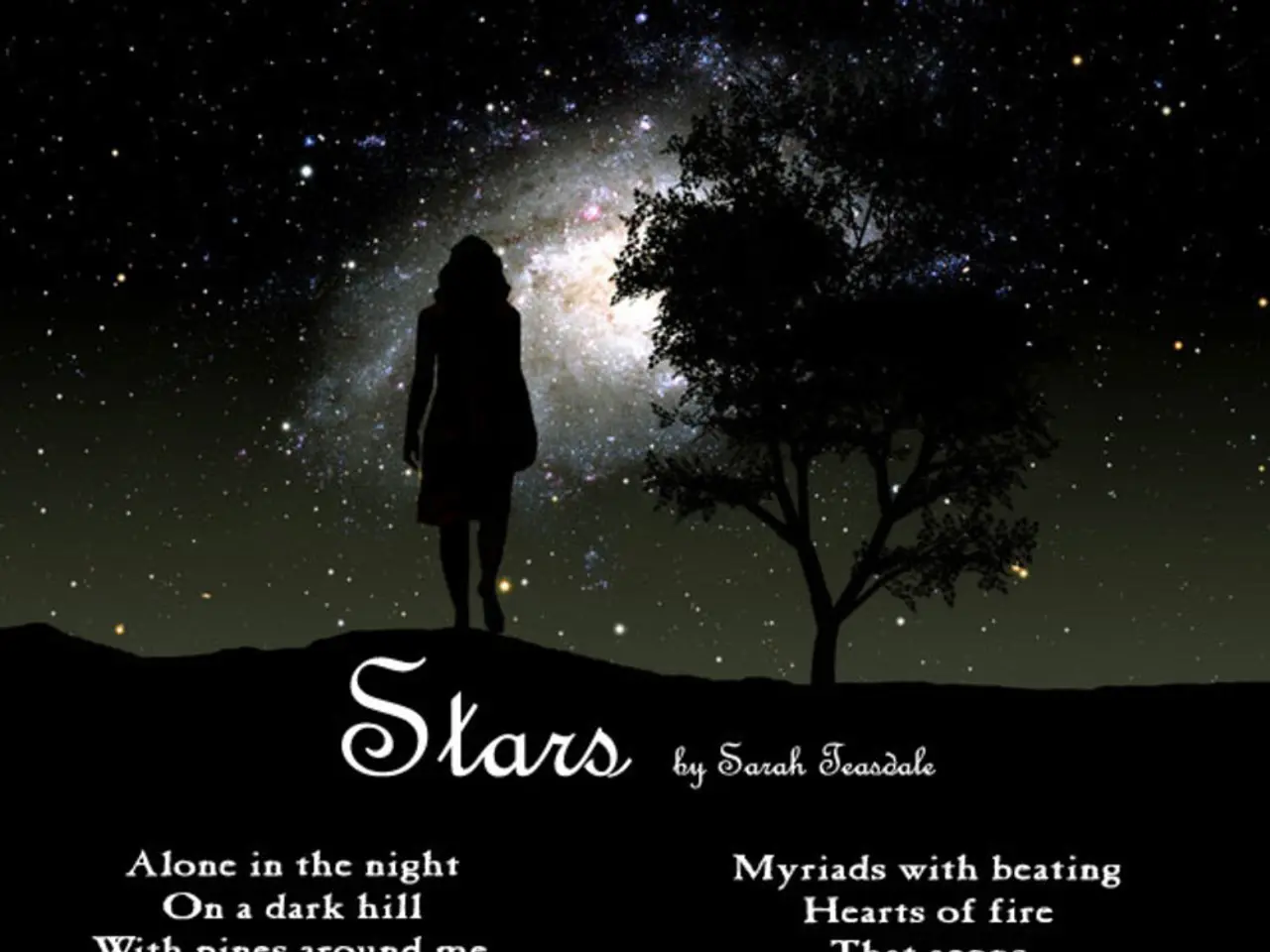Shimmering brilliantly amidst the darkness of the night, similar to twinkling stars.
In the heart of winter, stars continue to captivate our imagination, illuminating our celebrations and symbolizing hope and aspiration. This enduring association transcends scientific explanations, deeply rooted in human history and tradition.
During the Christmas season, the Star of Bethlehem holds a special place. According to Christian tradition, this celestial body guided the Wise Men to the birthplace of Jesus, symbolizing divine guidance, hope, and the promise of salvation. This symbolic use of stars predates and operates independently from their astrophysical nature as massive luminous spheres of plasma.
Stars have long been associated with navigation, spiritual guidance, and human aspiration towards something greater. Their role as a signifier of light during the darkest time of the year offers a powerful metaphor for hope, illumination, and aspiration in human consciousness.
Cultural rituals and religious meanings reinforce stars as symbols of guidance and hope. Many Christmas traditions, such as stars atop Christmas trees and depictions of the Nativity, continue to reinforce this symbolism. Emotionally and psychologically, stars represent something constant and far-reaching, inspiring people to dream and strive beyond their immediate realities, especially in times of celebration and reflection like Christmas.
Interestingly, stars have found resonance even in atheistic circles, as evidenced by their use in Soviet architecture. The fascination for stars and the longing for values such as meaning, spirituality, justice, beauty, freedom, and harmony of right relationships cannot be fully rationalized but resonate in each human heart.
This enduring fascination is reflected in the works of artists like Vincent van Gogh. Despite his struggles, van Gogh found hope and comfort in the stars, as expressed in his journal and artworks like "Starry Night" and "Starry Night on the Rhone". His fascination was long-term, as evidenced by "Starry Night on the Rhone", painted the previous year.
The symbolism of stars is not confined to the Christmas season. In the New Testament, the apostle Paul, in a very pagan culture, called upon the Philippians to "shine like stars" in a world of darkness, not referring to the Christmas season. This call for believers to be beacons of light remains relevant today, even in circumstances of war, sickness, corruption, and disappointment.
In conclusion, stars continue to symbolize hope, aspiration, light, and guidance, not because of their scientific explanations, but because those meanings are embedded in long-standing cultural, spiritual, and psychological traditions that resonate deeply during Christmas and beyond.
This article was first published on Jeff Fountain's blog, "Weekly Word", and was published in "Evangelical Focus" under the section "Window on Europe". Jeff Fountain is the Director of the Schuman Centre for European Studies.
[1] Cultural rituals and religious meanings: Many Christmas traditions, including stars atop Christmas trees and depictions of the Nativity, reinforce stars as symbols of guidance and hope. [2] Emotional and psychological resonance: Stars represent something constant and far-reaching, inspiring people to dream and strive beyond their immediate realities, especially in times of celebration and reflection like Christmas. [3] Contrast to scientific reality: Although science explains stars as physical entities governed by nuclear fusion and celestial mechanics, these details do not diminish the metaphorical and spiritual meanings that stars hold. Instead, people often approach stars metaphorically or spiritually during festive seasons. [4] Historical association: Stars and celestial bodies have been linked to navigation, spiritual guidance, and human aspiration towards something greater—whether that be divine beings, immortality, or enlightenment.
- Reflecting on Christian tradition, the Star of Bethlehem reaffirms its symbolic role as a beacon of divine guidance, hope, and promise during the Christmas season.
- The allure of stars transcends religious boundaries, serving as a symbol of hope and aspiration in various secular celebrations and cultural rituals.
- Fashion-and-beauty enthusiasts often use celestial elements in their designs, embodying the enchantment and mystery of stars.
- Food-and-drink offerings around the winter solstice frequently feature themes reminiscent of the stars, such as star-shaped cookies or sparkling beverages.
- Home-and-garden designers incorporate star motifs in their winter decorations to evoke feelings of warmth, light, and hope amidst the coldest months.
- Relationships on social media often revolve around sharing personal stories or aspirations, aligning with the metaphor of stars guiding people through life's complexities.
- Pet owners sometimes choose names inspired by celestial bodies or constellations, symbolizing the enduring bond between owners and their pets.
- Travelogues frequently mention breathtaking vistas, such as star-filled skies, capturing the awe-inspiring beauty of the cosmos in different locales.
- Car enthusiasts may find stylish and elaborate design features reminiscent of star constellations or galaxies, enhancing the aesthetic appeal of their vehicles.
- Bookstores often curate collections dedicated to pop-culture topics like science fiction and fantasy, reflecting the human fascination with the unknown and the romanticized versions of stars.
- Educational institutions offer courses in science, astronomy, and self-development that explore the role of stars in our understanding of the universe and human potential.
- Sports betting websites may offer astronomically-themed promotions or events during the winter months, inviting customers to engage in the thrill of chance reminiscent of the enigmatic stars.




